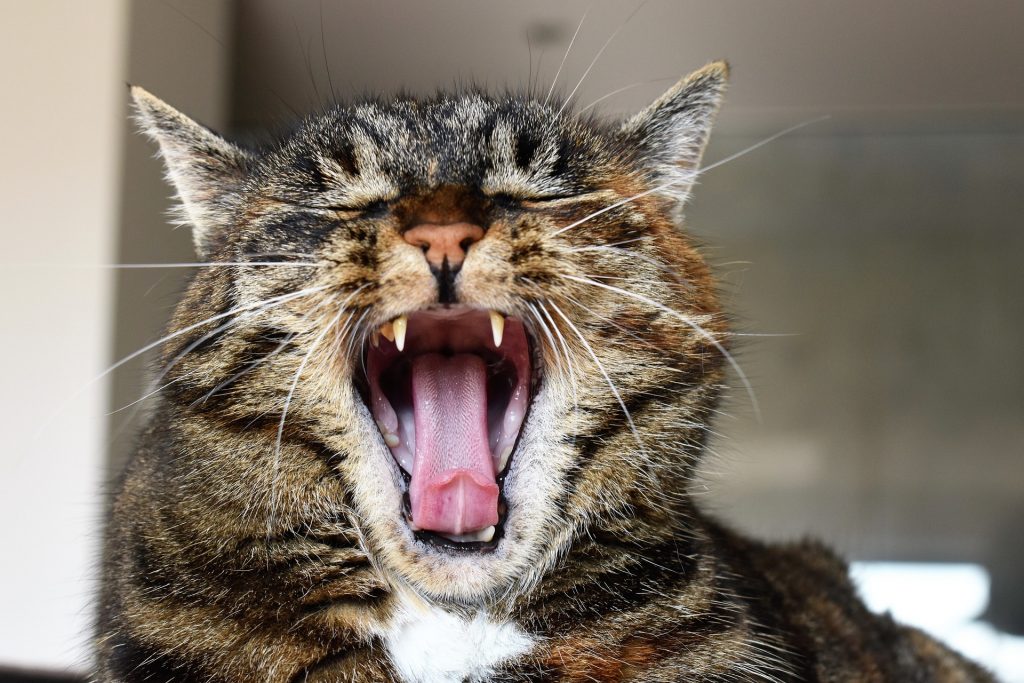Dental disease is very painful (just think – even a canker sore can ruin your day!). So why is it we hear so many clients telling us their pet isn’t in pain when they present to us with signs of dental disease? Animals have a natural instinct to hide their pain.
In the wild, it is a survival instinct not to show when they are wounded, and even domesticated animals have these instincts. While some pets will whine, hide, stop eating or display other obvious changes in behaviour, other pets show zero signs of pain. Often animals keep eating normally (even hard kibble), playing and acting their normal selves while living with a very painful medical condition. It’s important for us, as pet owners, to be able to not only recognize subtle signs of pain in our pets, but also to take the appropriate preventative measures to ensure our animals aren’t feeling pain. Here are a few things you should know when it comes to your pet and their dental health:
- Preventative care is not only more cost effective for you, but also more effective for your pet. Things like daily (even weekly) brushing, dental diets and treats, antiseptic oral rinses and even certain chew toys can improve your pet’s dental health. While at-home care won’t stop periodontal disease, it will slow its progression.
- Just like humans, pets should have regular exams of their teeth as well as regular professional dental cleanings. Having your pet’s teeth cleaned regularly can help us monitor oral changes and help us more easily identify causes of pain. The earlier we can recognize the signs of dental disease, the more successful our treatments will be and the less pain your pet will experience. It can be difficult to do a complete oral exam with most pets in an exam room while awake, so having the ability to assess their mouth while under anesthesia allows us to perform the most complete dental exam possible.
- A tooth is much like an iceberg – the “crown” (or the portion of the tooth we can see above the gum line) represents less than 50% of the tooth. The rest of the tooth lies below the gum line, and this is also where harmful tartar and bacteria like to build up. The visible portion of the tooth may appear completely healthy while being severely diseased below the gum’s surface. The ability to perform dental x-rays and probing below the gum line allows us to assess the integrity of the whole tooth.
- The change we see in pets with dental disease after a dental procedure is amazing. We regularly have clients tell us their pet is acting like a puppy/kitten again after the removal of painful, diseased teeth.
- You know your pet better than anyone. This means you are in the best position to recognize subtle signs of pain. Things like dropping food from their mouth while eating, chewing on only one side of the mouth, drooling, seeking more or less attention than usual, changes in sleeping patterns, restlessness/inability to settle at night and excessive panting in dogs can be more subtle signs of pain. Sometimes, there will be no changes at all, but this does not mean your pet is not feeling pain.
- If you feel your pet is in pain, never administer medications you have at home without consulting a veterinarian – even if this particular medication has been prescribed for your animal in the past. Over the counter human medications such as Tylenol are not appropriate for pain control in pets and can be toxic.




